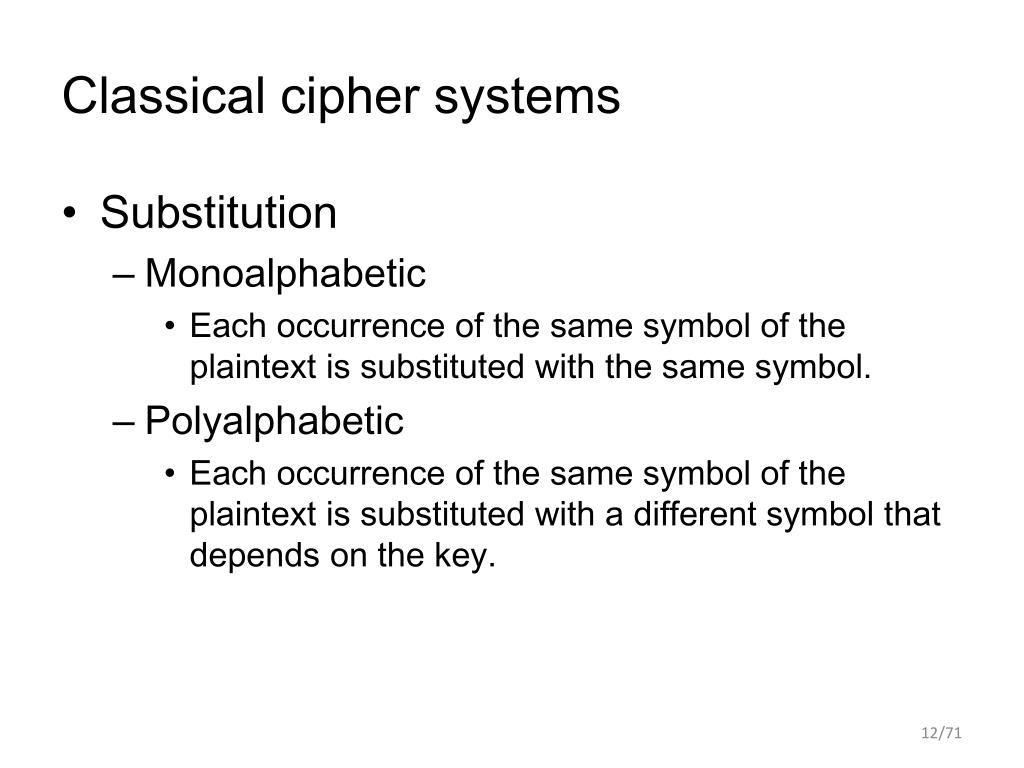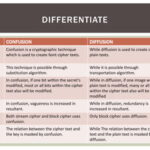The study of cryptography, an art as ancient as human civilization itself, hinges on the execution of safeguarding information from unauthorized access. Within the realm of cryptographic systems, two fundamental concepts—substitution and transposition—serve as the twin pillars that define classical cipher systems. These methods not only forge the backbone of early cryptographic practices but also inform the design of modern encryption techniques.
Substitution ciphers operate by replacing elements of the plaintext with corresponding symbols from a predetermined set, effectively obscuring the original message. The simplicity of this approach belies its intricate possibilities. A prominent example is the Caesar cipher, named after Julius Caesar who famously employed it to communicate with his generals. In this system, the letters of the alphabet are shifted by a fixed number of places. For instance, with a shift of three, A becomes D, B becomes E, and so forth. The elegance of the Caesar cipher is in its ease of implementation, yet its weaknesses render it vulnerable to frequency analysis—an examination of how often certain letters appear in the message.
Another notable substitution cipher is the Vigenère cipher, which introduces a keyword to dictate the shifting of letters. Unlike the Caesar cipher, where the shift remains constant, the Vigenère cipher applies a varying shift throughout the message dictated by the repeating sequence of the keyword. For example, if the keyword is “KEY” and the plaintext is “ATTACKATDAWN,” the encryption process becomes a dance of adjustments. Each letter in the plaintext is shifted according to its corresponding letter in the keyword, resulting in a complex interplay of transformations. This cipher reflects an advancement over the Caesar shift, yet it is still susceptible to sophisticated cryptanalysis if one is determined enough to uncover the keyword.
The second pillar, transposition ciphers, alters the arrangement of characters without changing the actual characters themselves. This transformation can occur through various mechanisms, including permutation of letters or blocks of letters within the plaintext. One of the earliest and most illustrious examples of a transposition cipher is the Rail Fence cipher. In this straightforward yet engaging system, the message is written in a zigzag pattern across several “rails.” The characters are then extracted horizontally to form the cipher text. For instance, if our plaintext is “HELLO WORLD” and we employ three rails, the message is arranged diagonally, and ultimately read row-wise, providing a scrambled version of the original message.
More sophisticated forms of transposition include the Columnar transposition cipher. This method involves writing the plaintext in rows of a set length and then permuting the columns based on a keyword. The arrangement can significantly obfuscate the message, as the order of columns changes depending on the alphabetical order of the keyword letters. In this case, if the keyword is “CIPHER,” the columns would be ordered as per the letters in that keyword, which adds a layer of complexity to the deciphering process.
When examining these two pillars, one must consider the multitude of variations and combinations possible within each system. Cryptanalysts, those who study the methods to decode and break ciphers without prior knowledge of the key, often exploit the inherent vulnerabilities in both types of classical ciphers. Substitution ciphers, being more straightforward, can easily fall to frequency analysis, while transposition ciphers, although slightly more robust, can still be unraveled through methods such as pattern recognition and exhaustive search strategies.
The interplay between substitution and transposition has also paved the way for hybrid systems that merge both strategies, thus enhancing security. For example, the Playfair cipher applies substitution principles to pairs of letters rather than single characters, resulting in fewer repetitions and a more resilient encoding. When paired with transposition elements, such as in the Book cipher, which relies on a predetermined text to create a unique code, the privacy of the information is exponentially increased.
As we reassess these primitive yet profound concepts, it’s crucial to recognize their enduring legacy in the digital age. Modern encryption methodologies, including symmetric and asymmetric key algorithms, owe a debt to these classical systems. Though the intricacies of today’s ciphers may be rooted in advanced mathematics and computational theory, the foundational principles of substitution and transposition remain intricately woven into their construction.
In conclusion, the exploration of substitution and transposition ciphers reveals a fascinating landscape of cryptographic evolution. Understanding these two pillars is not merely an academic endeavor; it invites a deeper appreciation for the ingenuity of individuals who, through the ages, sought to protect their correspondences from prying eyes. The principles governing these methods continue to influence contemporary security measures, proving that even in the face of technological advancement, the fundamental strategies of cryptography endure the test of time.









Leave a Comment